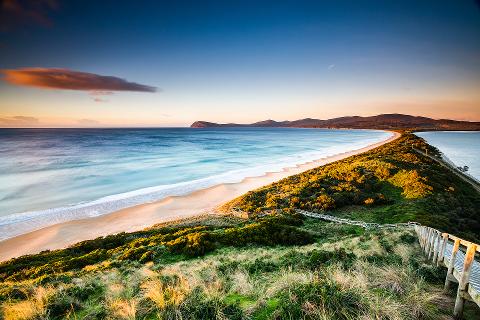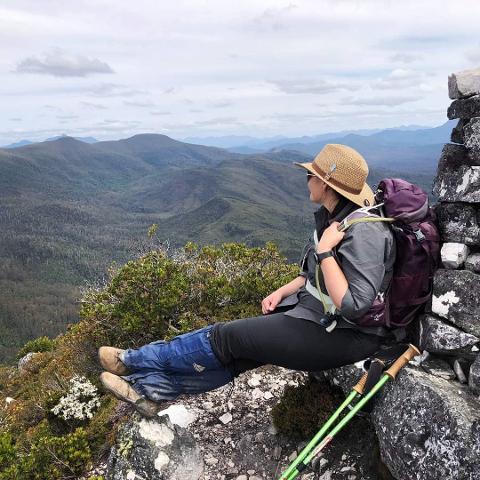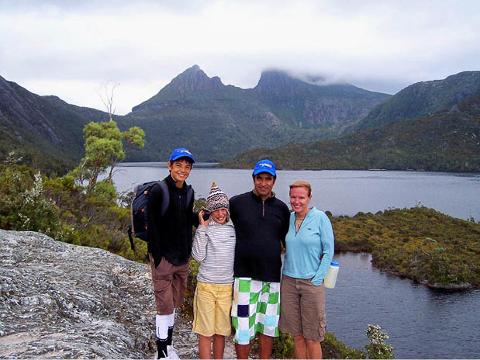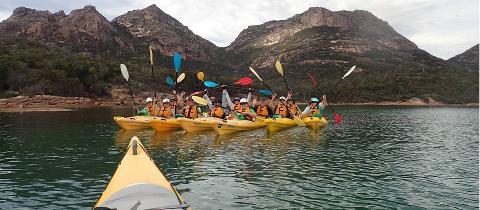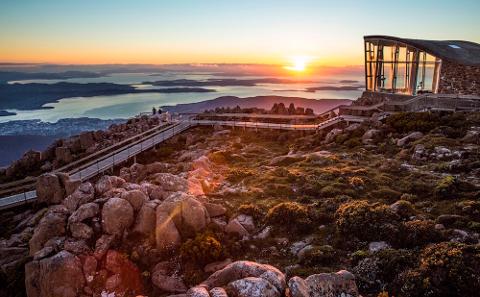Tasmania delivers much to see and do year-round: festivals, watersports, mountain biking, food and drinks, historical day trips, and a wide option of hiking trails for your enjoyment. The Natural State also boasts no less than 19 National Parks, with some of the world’s most exotic and rarest animals to discover. The temperature in Tasmania and Tasmania weather does fluctuate depending upon the time of year and where you are, so it is best to think ahead when planning, preparing, and packing for your trip.
Here is a list of seasonal things to do, and some tips for packing.
Arguably the best time of year to visit Tasmania is in their summer, from December to February, when it is warm and dry. Maximum temperatures average between 20 Celcius to 24 Celcius along the coast, and the valleys west of Hobart (the warmest locations), regularly rise above 25 Celcius. The Central Plateau is the coldest Tasmania has to offer, with temperatures ranging from 4 Celcius, and rarely exceeding 17 Celcius.
Things To Do and Highlights
The available activities reads like a list out of Sports Illustrated: There’s boating, scuba, swimming, fishing, biking, picnicking, hiking, and more.
Festivals, of which there are many, fill the calendar: The Taste of Tasmania, the Huon Agricultural Show, the Sydney to Hobart Yacht Race, the Cygnet Folk Festival and MONA FOMA (Museum of Old and New Arts Festival of Music and Arts), among others.
What to Pack
Pack light, with comfortable walking shoes, breathable clothing, shade hat, sunscreen, and a light-weight jacket or sweater for the cooler evenings. And don’t forget your swimsuit!
March to May brings in the autumn coolness and harvest time. Average highs are just above 20 Celcius in the valleys and 15 Celcius along the coast, with lows recorded around 11 Celcius to 7.6 Celcius. This is the best season for getting out to the farms and vineyards, as produce is at its peak and wines beckon for the tasting.
Things To Do and Highlights
The Autumn Festival is jam-packed with food, music, and activities. The colours of autumn offer spectacular photography opportunities, the Targa Tasmania Road Race will rev up your vacation, and Ten Days on the Island Art Festival is the largest arts and artisan fair in Tasmania. Yachting is always an option as are hiking and walking tours.
What To Pack
Pack warmer clothing as the temperature can get chilly, especially at night and when the winds across the waters begin to pick up. Bring warm shoes, trousers, sleeves, and a jacket. Think “layers.”

September to November ushers in the springtime with a spectacular burst of colour. It is a season of frequent change, and snowfall is still common in the mountains through October. This is also the windiest time of year. Average temperatures range on the high side from 15.4 Celcius inland and 19 Celcius coastal, to lows of 7 Celcius to 10 Celcius, respectively.
Things To Do and Highlights
The Bloomin’ Tulips festival is a must see for those who love flowers. A boat trip from Hobart to Port Arthur for the evening ghost tour is a visitor favourite, too. Other activities include hiking, biking, wine tasting, rafting on the many rivers, and visiting the stunning Tasmanian Royal Botanical Gardens.
What To Pack
It will be chilly, so be sure to pack your boots, a hat, scarf, heavier clothing for layering against the colder nights, and a good jacket.
The winter months of June, July and August are the wettest and coldest, and there is considerable snowfall in the higher elevations. Temperatures are typically warmer than mainland Australia, and most of coastal Tasmania rarely drops below freezing. The average highs are from 12 Celcius (coastal) to 3 Celcius (inland), and the elevated inland areas average 0 Celcius.
Things To Do and Highlights
Winter may be the least crowded season in Tasmania, but there is nothing lifeless about a visit to the island during June, July, and August.
Snowshoeing the Overland Track is brisk and challenging. Consider a distillery tour or sitting by a roaring fire on the beach, star gazing. Visit the Chocolate Winterfest in Latrobe to sample chocolatiers’ indulgent confections. The Festival of Voices features all types of voice performers and singalongs. Dark Mofo features an array of entertainment options, along with the Winter Feast culinary delight, and the infamous nude swim on the Summer Solstice!
What To Pack
Pack rain gear, waterproof footwear, warm socks, hat, scarf, gloves, a bumbershoot, an extra set of clothes in case you forget your bumbershoot, and a good winter jacket.
Regardless of when you travel to Tasmania, remember to pack your camera to record what is sure to be a most memorable time on this unique Pacific island, down under.

